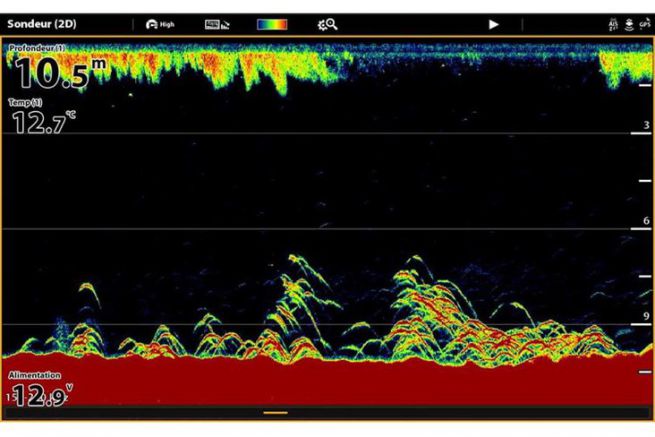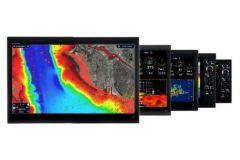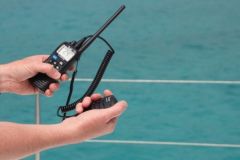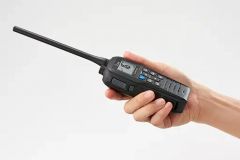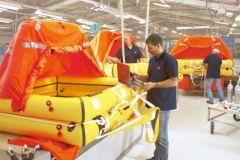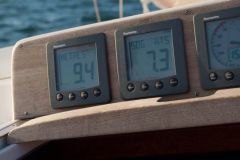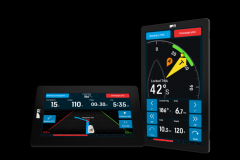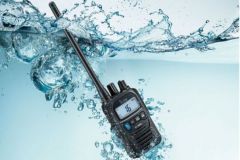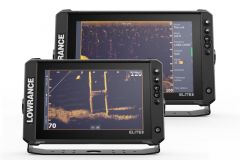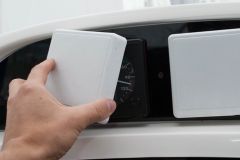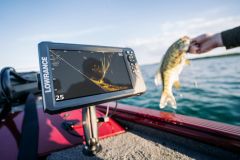Via its probe, a sounder sends an echo to the bottom and waits for the return to estimate the bottom. Depending on the speed of propagation of the sound underwater, it defines the depth. Today's more sophisticated fishfinders have increased their performance by being able to analyse the quality of the return echo and thus better define the nature of the bottom. So if a fish passes through the cone of the probe, it also appears. Usually it is the swim bladder (an air pocket) that returns the echo.
Why a bow shape when the fish pass by?
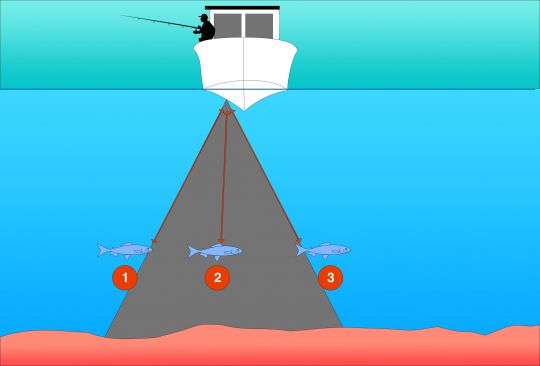
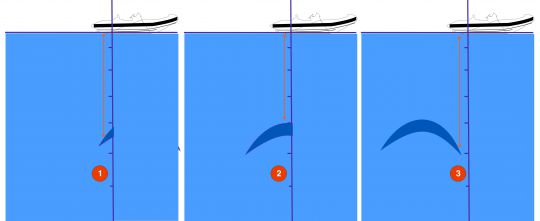
When the fish enters the cone, the distance D is measured at the edge of the cone. It is longer than when the fish is in the centre of the cone. And it increases again when it comes out of the cone. That's why its design on the sonar's screen is shaped like an arc of a circle.
Difficulty in understanding scrolling
Let us imagine a boat that is stationary, it does not move in relation to the bottom. In spite of this, the image drawn on the depth sounder continues to evolve (it scrolls from right to left). This lateral movement can be confusing to novices. The sonar's scrolling is never related to the boat's speed.
How to define the size of the fish?
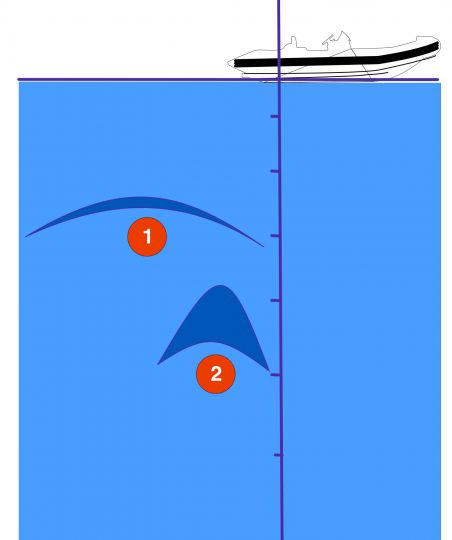
The size of the arc is not related to the size of the fish. It is not its length that counts, but its thickness. A small fish that will slowly pass through the sonar cone will have a fairly long arc (image 1), but it will not be very thick. Conversely, a large fish that moves quickly through the cone will have a very short arc, but it will be very thick (image 2).
